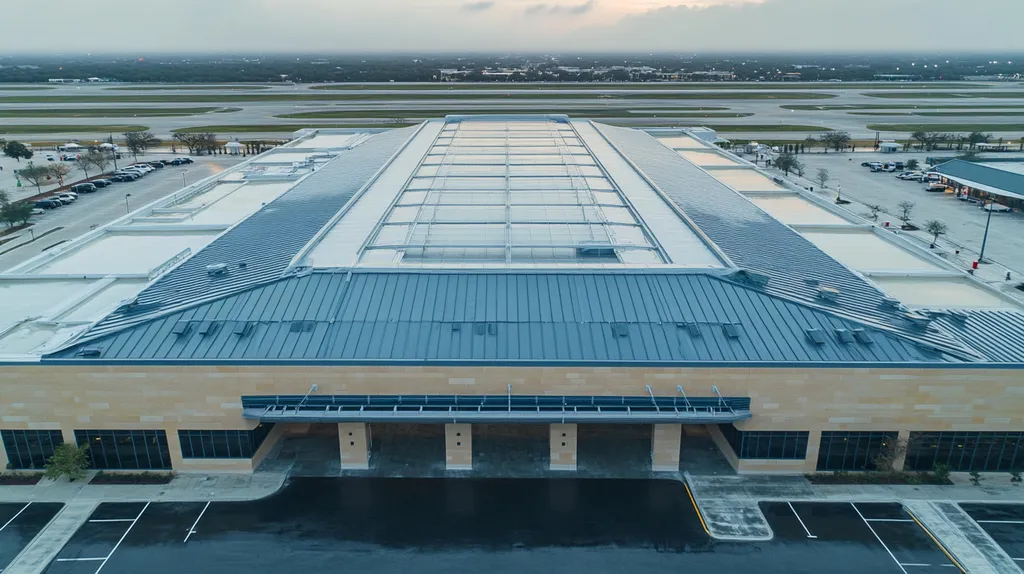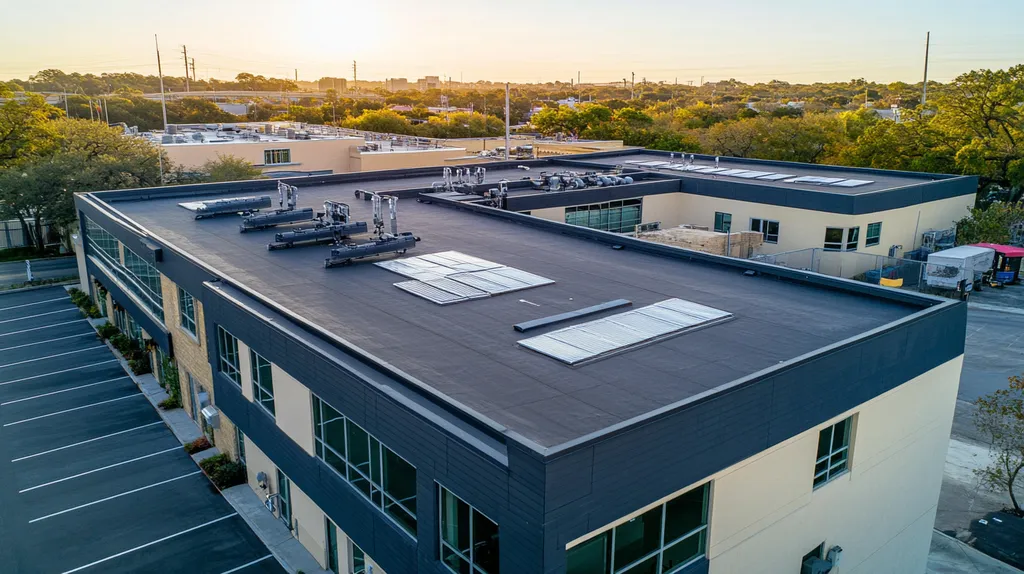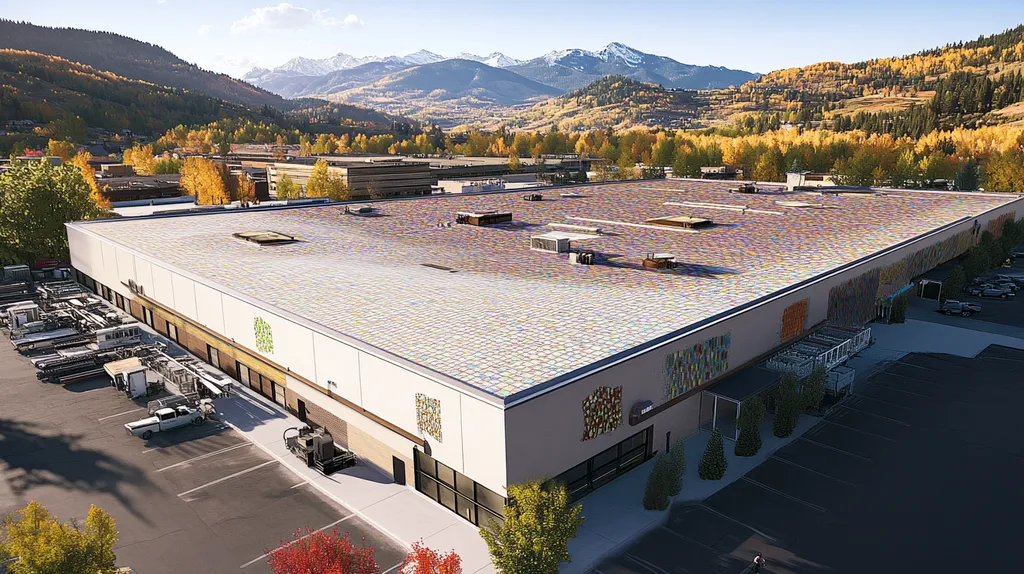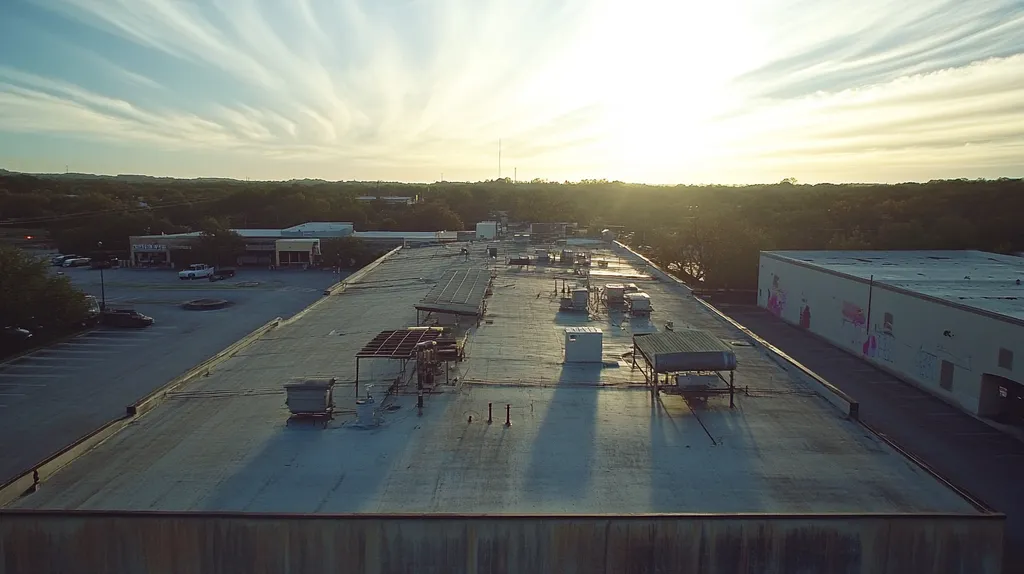Welcome to today’s Battle Royale featuring two roofing heavyweights: “Silicone” in the east corner versus “Polyurethane Coatings” in the west!
Tonight’s showdown pits these contenders against each other across six punishing rounds designed to test every aspect of their performance for Coated Commercial Roof systems.
At stake? Millions in potential costs, decades of building protection, and the critical performance demands of modern commercial and industrial facilities.
Our professional judging panel will evaluate each round on technical merit, real-world performance, and value delivery. After all six rounds, we’ll declare our ultimate champion.
Ladies and gentlemen, facility managers and building owners… it’s time to rumble!
ROUND 1: INITIAL COSTS & INSTALLATION
When evaluating commercial roof coatings, the initial investment and installation process can make or break a project’s success. Recent market data shows that improper coating selection leads to 35% of premature roof failures, making this decision particularly crucial for property owners managing aging roof assets.
Understanding the true costs – both obvious and hidden – of silicone versus polyurethane coatings requires careful analysis of materials, labor, and project duration. These factors directly impact not only immediate expenses but also long-term roof performance.
Material Expenses
Material costs represent a significant portion of any coating project’s budget. Silicone coatings typically cost $1.75 to $3.25 per square foot for commercial-grade products, making them an economical choice for many applications.
Polyurethane coatings generally command higher prices, ranging from $2.25 to $4.50 per square foot. This premium reflects their multi-layer application requirements and enhanced physical properties.
While both materials offer strong performance characteristics, silicone’s lower initial cost provides better value for budget-conscious property owners. The material cost difference can amount to thousands of dollars on larger commercial projects.
For material expenses, silicone coatings hold a clear ADVANTAGE.
Installation Complexity
Installation procedures significantly impact both labor costs and project success rates. Silicone coatings feature a straightforward single-coat application process that requires minimal specialized equipment and crew training.
Polyurethane systems demand more complex installation protocols, including precise mixing ratios and multiple coat applications. These requirements increase the potential for application errors and necessitate more skilled labor.
The simpler installation process of silicone coatings reduces labor hours and minimizes the risk of application errors. This translates to lower overall installation costs and fewer potential complications.
Regarding installation complexity, silicone coatings demonstrate a clear ADVANTAGE.
Project Timeline
Project duration directly affects facility operations and overall costs. Silicone coatings typically require 24-48 hours for full cure, allowing for rapid project completion and minimal business disruption.
Polyurethane systems need extended cure times between coats, often stretching projects over several days. Weather sensitivity during application can further extend installation timelines.
The faster completion times associated with silicone coatings reduce labor costs and minimize operational disruptions. This efficiency becomes particularly valuable in time-sensitive commercial environments.
For project timeline considerations, silicone coatings claim another clear ADVANTAGE.
ROUND 1 WINNER: SILICONE COATINGS
ROUND 2: DURABILITY & LIFESPAN
When evaluating commercial roof coatings, durability and lifespan directly impact the return on investment. Industry data shows that 40% of commercial roofs fail prematurely due to incorrect coating selection or poor application methods, leading to costly repairs and replacements.
Understanding how silicone and polyurethane coatings perform under various environmental conditions helps property owners make informed decisions that protect their roofing investments for decades to come.
Durability Under Environmental Stress
Environmental resistance determines how well a coating system protects the underlying roof structure. Silicone coatings demonstrate exceptional resistance to UV radiation, temperature extremes, and ponding water, maintaining their protective properties even after years of exposure.
Polyurethane coatings excel in mechanical strength and impact resistance but can show signs of UV degradation over time. Their superior tensile strength makes them ideal for high-traffic roofs requiring frequent maintenance access.
While both materials offer strong protection, silicone’s superior weathering characteristics and resistance to ponding water provide better long-term performance in most commercial applications.
For environmental durability, silicone coatings claim a clear ADVANTAGE.
Lifespan Estimates and Warranty Coverage
Expected service life drives long-term cost calculations for commercial roofing systems. Silicone coatings typically last 15-20 years with proper maintenance, backed by manufacturer warranties that protect against premature degradation.
Polyurethane systems offer comparable longevity, with some premium products warranted for up to 20 years. Their multi-layer application provides redundant protection that can extend roof life when properly maintained.
Both coating types deliver similar long-term performance when correctly specified and installed. The comprehensive warranty coverage available for both systems reflects their proven durability.
For expected lifespan, this category results in a TIE.
Maintenance Requirements
Regular maintenance impacts both performance and lifecycle costs. Silicone coatings require minimal upkeep, typically needing only periodic inspections and basic cleaning to maintain their protective properties.
Polyurethane systems demand more frequent maintenance inspections and may require occasional recoating of high-wear areas. Their complex chemistry makes repairs more challenging and increases long-term maintenance costs.
The simplified maintenance regime of silicone coatings reduces operational expenses and minimizes disruption to facility operations. This practical advantage becomes particularly valuable for buildings with limited maintenance budgets.
For maintenance considerations, silicone coatings demonstrate a clear ADVANTAGE.
ROUND 2 WINNER: SILICONE
ROUND 3: PERFORMANCE FACTORS
Performance characteristics of commercial roof coatings directly impact building protection and long-term cost effectiveness. Recent industry data shows that 45% of coating failures stem from misunderstanding key performance factors, leading to premature degradation and unnecessary replacement costs.
Understanding how silicone and polyurethane coatings perform across critical metrics helps facility managers make informed decisions that protect their roofing investments and avoid costly mistakes.
Weather Resistance
Weather resistance determines how well a coating system maintains its protective properties under harsh conditions. Silicone coatings demonstrate exceptional stability under UV exposure, maintaining flexibility and adhesion even after decades of sun exposure.
Polyurethane coatings offer good initial weather resistance but can become brittle over time when exposed to constant UV radiation. Their performance typically degrades faster in high-temperature environments, leading to potential coating failure.
While both materials provide weather protection, silicone’s superior UV stability and heat resistance result in longer-lasting performance. This difference becomes particularly apparent in hot, sunny climates where coating degradation occurs more rapidly.
For weather resistance, silicone coatings demonstrate a clear ADVANTAGE.
Chemical Resistance
Chemical resistance protects roofing systems from environmental pollutants and cleaning solutions. Silicone coatings exhibit strong resistance to acid rain, industrial emissions, and common roof cleaning chemicals without degrading.
Polyurethane systems show excellent resistance to oils and petroleum products but can be vulnerable to certain cleaning solutions and chemical exposures. Their performance may decline when repeatedly exposed to harsh chemical environments.
In industrial areas or locations with high pollution levels, the chemical resistance difference significantly impacts coating longevity. Silicone’s broader chemical resistance spectrum provides better long-term protection.
For chemical resistance, silicone coatings claim another clear ADVANTAGE.
Flexibility and Movement
Building movement and thermal cycling stress roofing systems daily. Silicone coatings maintain flexibility throughout their service life, accommodating building movement without cracking or separating from the substrate.
Polyurethane coatings offer good initial flexibility but can become less elastic over time. This reduced flexibility may lead to coating failure, particularly in regions with extreme temperature fluctuations.
The ability to maintain flexibility directly impacts coating performance and longevity. Silicone’s sustained elasticity provides superior protection against building movement and thermal stress.
For flexibility, silicone coatings secure another clear ADVANTAGE.
ROUND 3 WINNER: SILICONE COATINGS
ROUND 4: MAINTENANCE REQUIREMENTS
Maintenance requirements can make or break a commercial roofing investment, with improper upkeep leading to 40% of premature coating failures. The choice between silicone and polyurethane coatings significantly impacts long-term maintenance costs, inspection frequency, and repair complexity. Property owners must carefully evaluate these factors to protect their investment and avoid unexpected expenses.
Maintenance Frequency
Proper installation and regular maintenance are critical factors in achieving maximum roof coating lifespan. Silicone coatings typically require annual inspections and minimal cleaning, maintaining their protective properties with basic care. (source: ABSI)
Polyurethane coatings demand more frequent attention, often requiring bi-annual professional inspections and regular surface cleaning. Their complex chemical structure makes them more susceptible to environmental damage without consistent maintenance.
The reduced maintenance frequency of silicone coatings translates to lower long-term costs and fewer disruptions to building operations. This practical advantage becomes particularly valuable for facilities with limited maintenance resources.
For maintenance frequency requirements, silicone coatings demonstrate a clear ADVANTAGE.
Repair Complexity
When damage occurs, repair complexity directly impacts downtime and costs. Silicone coatings allow for simple repairs, with new material readily bonding to existing surfaces without extensive preparation.
Polyurethane coating repairs often require careful surface preparation and precise application conditions. The multi-layer nature of these systems makes repairs more complex and time-consuming.
The straightforward repair process of silicone coatings reduces labor costs and minimizes facility disruption. This efficiency becomes crucial when addressing unexpected damage or wear.
For repair complexity, silicone coatings claim another clear ADVANTAGE.
Long-Term Performance
Long-term performance stability affects ongoing maintenance needs and costs. Silicone coatings maintain their physical properties over time, requiring minimal intervention to preserve their protective capabilities.
Polyurethane systems may require periodic recoating of high-wear areas and more frequent touch-ups to maintain their protective qualities. Their performance can degrade more quickly in challenging environments.
The consistent performance of silicone coatings reduces the need for major maintenance interventions. This reliability translates to more predictable maintenance budgets and fewer unexpected repairs.
For long-term performance stability, silicone coatings secure another clear ADVANTAGE.
ROUND 4 WINNER: SILICONE COATINGS
ROUND 5: SUSTAINABILITY CREDENTIALS
Environmental impact has become a critical factor in commercial roofing decisions, with 42% of facility managers now prioritizing sustainability in their coating selections. The choice between silicone and polyurethane coatings carries significant implications for energy efficiency, waste reduction, and long-term environmental footprint.
Understanding these sustainability differences helps property owners align their roofing investments with both environmental goals and operational requirements. Making informed choices about coating materials directly impacts building efficiency and environmental compliance.
Environmental Impact
The environmental footprint of roofing materials extends from manufacturing through disposal. Silicone coatings feature lower VOC emissions during application and can typically be applied directly over existing roof surfaces, minimizing landfill waste.
Polyurethane coatings often require more extensive surface preparation and removal of existing materials. Their manufacturing process involves more complex chemical compounds, resulting in a larger carbon footprint.
Silicone’s reflective properties also contribute to reduced cooling loads, with studies showing up to 35% decrease in roof surface temperatures compared to traditional coatings. This energy efficiency advantage compounds over the coating’s lifespan.
For environmental impact considerations, silicone coatings demonstrate a clear ADVANTAGE.
Resource Conservation
Material efficiency and resource conservation directly impact sustainability performance. Silicone coatings typically require fewer gallons per square foot and can achieve desired protection levels with single-coat applications.
Polyurethane systems demand multiple coats and more frequent reapplication cycles. This increased material usage translates to higher resource consumption over the coating’s lifetime.
The simplified application process of silicone coatings also reduces water consumption during installation and maintenance. This resource efficiency extends throughout the product lifecycle.
For resource conservation, silicone coatings claim another clear ADVANTAGE.
End-of-Life Management
Responsible disposal and recyclability increasingly influence coating selection. Silicone coatings can often be recoated directly, eliminating removal and disposal requirements while extending roof life.
Polyurethane coatings frequently require complete removal before reapplication, generating substantial waste. Their complex chemical structure also makes recycling more challenging.
The ability to recoat without removal gives silicone significant advantages in waste reduction and lifecycle management. This characteristic aligns with growing demands for sustainable building practices.
For end-of-life management, silicone coatings secure another clear ADVANTAGE.
ROUND 5 WINNER: SILICONE COATINGS
ROUND 6: SPECIALIZED APPLICATIONS
Specialized roofing applications present unique challenges that can lead to catastrophic failures when coating systems are improperly specified. Recent data indicates that 47% of premature coating failures in industrial settings stem from mismatched application requirements, resulting in millions in unnecessary repair costs.
Understanding how different coating systems perform under specific environmental and operational demands helps facility managers avoid costly mistakes while maximizing protection for their roofing assets.
High-Temperature Environments
Extreme temperature conditions place intense demands on roof coating systems. Silicone coatings maintain their physical properties and flexibility even when exposed to sustained temperatures up to 350°F, making them ideal for buildings with high internal heat loads.
Polyurethane coatings begin to degrade when consistently exposed to temperatures above 180°F. This limitation can lead to premature coating failure in facilities with industrial processes generating significant heat.
The superior heat resistance of silicone coatings provides better protection for specialized high-temperature applications. This performance difference becomes particularly critical in manufacturing and processing facilities.
For high-temperature environments, silicone coatings demonstrate a clear ADVANTAGE.
Cold Storage Facilities
Cold storage buildings face unique challenges from extreme temperature differentials and constant condensation risks. Silicone coatings maintain flexibility even at sub-zero temperatures while providing excellent moisture resistance.
Polyurethane systems can become brittle in extremely cold conditions, potentially compromising their protective capabilities. Their reduced flexibility at low temperatures increases the risk of cracking during thermal cycling.
The consistent performance of silicone coatings across extreme temperature ranges provides better protection for cold storage applications. This reliability becomes crucial for maintaining building envelope integrity.
For cold storage applications, silicone coatings claim another clear ADVANTAGE.
High-Traffic Areas
Rooftop areas subject to frequent maintenance access require exceptional wear resistance. Polyurethane coatings excel in these applications due to their superior abrasion resistance and mechanical strength.
Silicone coatings show lower resistance to physical wear and can become damaged more easily from foot traffic. Their softer surface makes them less suitable for areas requiring frequent maintenance access.
The enhanced durability of polyurethane coatings provides better protection in high-traffic zones. This performance advantage becomes particularly important for roofs with mechanical equipment requiring regular service.
For high-traffic areas, polyurethane coatings secure a clear ADVANTAGE.
ROUND 6 WINNER: SILICONE COATINGS
AND THE WINNER IS…
After six grueling rounds of technical evaluation, we have our verdict…
In a dominant performance that sent shockwaves through the commercial roofing world, SILICONE COATINGS have emerged as our undisputed champion, winning five out of six rounds!
This powerhouse contender demonstrated superior prowess in initial costs, durability, performance factors, maintenance requirements, and sustainability credentials. Its combination of UV resistance, simplified installation, and long-term reliability proved simply unstoppable in the ring.
Yet don’t count polyurethane coatings out completely! This worthy challenger showed impressive strength in high-traffic applications, making it the go-to choice for roofs requiring frequent maintenance access or superior mechanical resistance.
But remember, folks – every building tells its own story. Local climate conditions, substrate characteristics, and specific facility requirements can all impact coating performance. While silicone emerged victorious in our face-off, your building’s unique needs might favor a different champion.
Before making your final decision, consult with qualified roofing professionals who can evaluate your specific situation and requirements. They’ll help ensure your choice delivers the knockout performance your facility demands.
Because in the high-stakes world of commercial roofing, the real victory comes from matching the right coating system to your building’s specific challenges. Now that’s what we call a winning strategy!
FREQUENTLY ASKED QUESTIONS
Q. What are the initial costs of a commercial roof coating?
A. The initial costs of applying commercial roof coatings vary significantly. Silicone coatings typically range from $1.75 to $3.25 per square foot, while polyurethane systems can cost between $2.25 to $4.50 per square foot. Proper analysis of these material costs along with installation complexity is crucial for long-term performance and budget management.
Q. What is the expected lifespan of a commercial roof coating?
A. Silicone coatings typically last 15-20 years with proper maintenance. Polyurethane systems also display comparable lifespans, with some warranties extending up to 20 years. Both materials can deliver similar long-term performance when specified and installed correctly, making maintenance a key factor in maximizing longevity.
Q. How do silicone and polyurethane coatings differ in weather resistance?
A. Silicone coatings exhibit superior weather resistance, maintaining flexibility and adhesion under UV exposure. In contrast, polyurethane coatings can become brittle over time, especially under constant UV radiation, impacting their long-term functionality. This difference makes silicone coatings more suitable for environments with extreme weather conditions.
Q. What are the maintenance requirements for a commercial roof?
A. Silicone coatings generally require less maintenance than polyurethane systems, with annual inspections and minimal cleaning needed. Polyurethane coatings often necessitate bi-annual inspections and more frequent upkeep, which increases maintenance costs. Choosing the right coating can significantly affect ongoing operational expenses and facility disruptions.
Q. How do silicone and polyurethane coatings differ in terms of sustainability?
A. Silicone coatings generally produce lower VOC emissions and can often be applied directly over existing materials, reducing waste. Polyurethane coatings require more removal and prep work, leading to a larger environmental footprint. Silicone’s reflective properties also enhance energy efficiency, making it a more sustainable choice.
Q. Which coating is better for high-traffic areas of a commercial roof?
A. For high-traffic areas, polyurethane coatings are generally more suitable due to superior abrasion resistance and mechanical strength. Silicone coatings, while effective in many applications, do not withstand heavy foot traffic as well and may deteriorate more quickly in these environments, making polyurethane a preferred option.
Q. How do I choose the right coating for my industrial roof?
A. Selecting the right coating for an industrial roof involves assessing environmental factors, expected traffic levels, and specific operational needs. Consider factors like temperature extremes, chemical exposure, and required maintenance. Collaborating with a qualified roofing contractor can help ensure that the chosen coating system aligns with these unique requirements for maximum performance.











